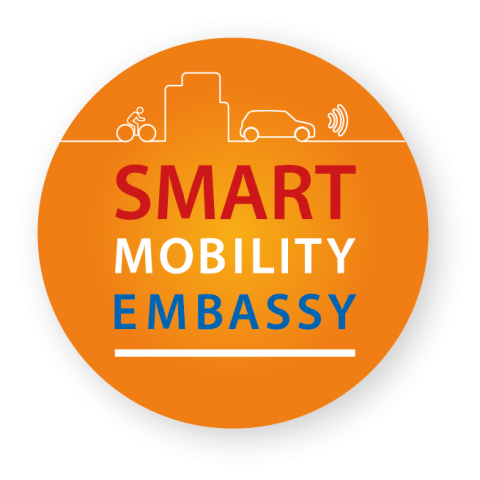
Last month our colleague Sanne Aelfers joined the Smart Mobility Embassy webinar to discuss a common challenge: ‘How do we successfully implement ZE-zones to reach our climate goals?’
Some of the Q and A’s can be found here. If you would like to know more about the impact of the implementation of ZE-zones on your business, please don’t hesitate to contact Districon and see what we can do for you.
In general, how do you feel the logistics sector responds to the announcements of the 30 to 40 biggest cities with ZE zones?
Very mixed. For delivery vans the majority of the companies are convinced that electric mobility is the future. The challenge is to reach and assist small companies whose core business is not logistics related. For example, the bakery at the corner of the street. For trucks the challenge is different. There are the frontrunners who are eager to learn and experiment. But there seems to be a large group that doesn’t believe it is going to work and will wait until they are forced to change or that it is proven to be cheaper.
How would you describe the role of technology in implementing ZE zones to reach our climate goals?
Technology is very important in the implementation of the ZE zones. In the first place of course in the development of batteries to make them smaller, lighter, and more efficient and to make the charging infrastructure faster. But also, to enable the enforcement of PHEV with technologies like geofencing.
We hear a lot about the pro’s but what are the cons of implementing ZE zones? For example, thinking about the diversity of suppliers with suitable vehicles?
Implementing a ZE zone has also side effects. It is important to choose the borders of the zone wisely. Maintain a levelled playing field: entrepreneurs within the zone shouldn’t have a competitive disadvantage. The ZE zone in a city also affects surrounding cities. For example, the charging infrastructure, hubs, and the displacement of emissions. At this moment electric vehicles are heavier than combustion engine vehicles. In relation to the problems with the bridges and quays in for example Amsterdam, this is a challenge.
Which policies should be implemented today to support transport companies to adapt and invest in their business operation, so we are able to reach our climate ambitions with the implementation of zero-emission zones?
Provide information and help on:
- Costs and how to make driving electric financial attractive
- How to implement and use an electric vehicle? Which battery do I need? Which charging infrastructure? Is my power grid connection suitable? How could I change that? How does electric mobility affect the planning of truck and drivers?
- Develop policies to make enable grid operators to realize grid reinforcements in time, and provide clear information to companies on the timelines
What knowledge do municipalities need about the geographical location of charging infrastructure and the energy system and expected energy needs?
They should get insights in the expected charging needs. Every logistical sector has its own characteristics and needs. Where are the vehicles going to charge? Will they charge on private or public locations? Is the power grid able to fulfil the expected power needs? For example, at business parks the demand of power over night can rise tremendously.
Previous studies show that the electricity demand for electric delivery vans within a city almost equals the electricity demand for passenger cars. Cities are not aware of these insights.
According to you, why couldn’t ZE zones be implemented tomorrow? What are the mayor hurdles we still need to overcome?
The production of enough electric vehicles, building charging infrastructure and not to forget the preparation of the power grid takes a lot of time! We really need to act now to be ready in 2025.
